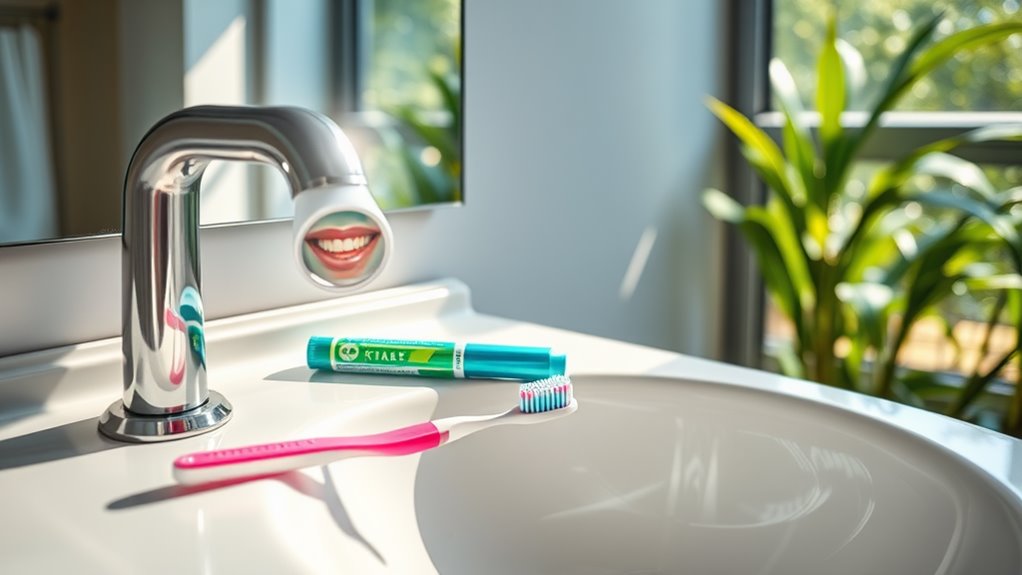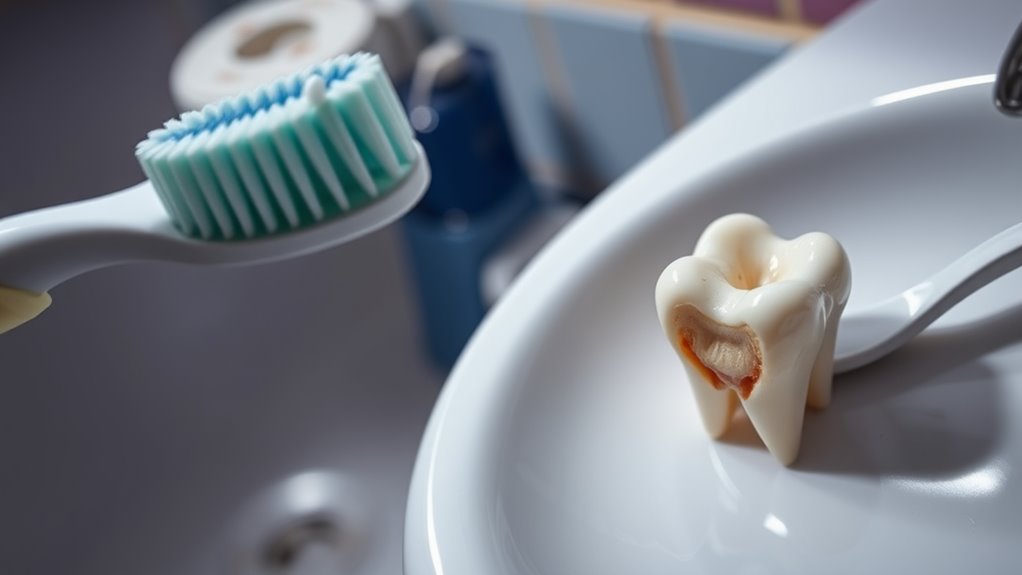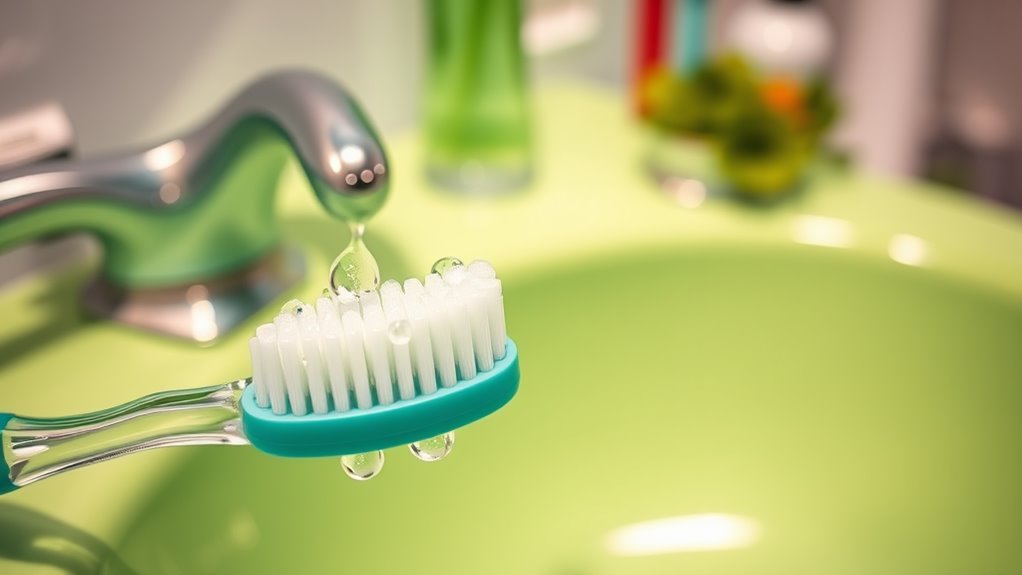Are You Brushing Wrong. 7 Common Brushing Mistakes!
You might be brushing your teeth wrong and not even know it! Many people brush for just 30 seconds instead of the recommended two minutes. You may be using the wrong technique by scrubbing side to side or brushing too hard, which can damage your teeth and gums. Don’t forget to replace your toothbrush every three to four months and care for your tongue, too. Keep exploring to learn more about common brushing mistakes!
Not Brushing for the Right Amount of Time
One common mistake people make isn’t brushing for the right amount of time.
You’re supposed to brush for at least two minutes, but many only hit the 30-second mark. When you rush, you miss those hard-to-reach areas, letting plaque build up and potentially ruining that fresh smile you want to show off.
Picture your friends enjoying a laugh, their confidence shining through clean teeth. You want that, too! Set a timer or use a song to help you stay on track.
Using the Wrong Technique
Rushing through brushing isn’t the only pitfall that can undermine your oral hygiene. Using the wrong technique can lead to plaque buildup and gum disease, leaving you feeling insecure about your smile. You deserve a bright, healthy mouth!
| Mistake | Consequence | Solution |
|---|---|---|
| Scrubbing side to side | Enamel wear | Use gentle circular motions |
| Neglecting your gums | Gum inflammation | Brush along the gum line |
| Failing to angle the toothbrush | Missed plaque | Hold at a 45-degree angle |
Brushing Too Hard
Although it might seem beneficial to apply extra pressure while brushing, doing so can actually harm your teeth and gums. Many of us think that scrubbing harder will yield cleaner teeth, but it can lead to enamel erosion and gum irritation.
Instead, use gentle, circular motions. Think of your toothbrush as a friend—treat it with care! You don’t need to wrestle with plaque; a soft touch is more effective and less damaging.
Also, consider using a toothbrush with soft bristles to further protect your smile. Remember, we all want those bright, healthy smiles, so let’s embrace a kinder brushing technique together.
Making this small change can lead to a lifelong boost in oral health and help us all belong to the community of healthy smiles!
Forgetting to Replace Your Toothbrush
While you mightn’t realize it, forgetting to replace your toothbrush can significantly impact your oral health. A worn-out brush won’t clean your teeth effectively, and bacteria can build up in the bristles.
It’s not just about keeping it looking good; it’s about ensuring your smile stays bright and healthy. Ideally, you should swap out your toothbrush every three to four months—or sooner if the bristles fray. This small act can make a big difference in your dental routine.
Joining the crowd that regularly replaces their toothbrush means you’re taking part in a collective effort to maintain great oral hygiene. So, why not set a reminder? Your mouth will thank you, and you’ll feel even more connected to your oral health journey.
Ignoring Your Tongue
Your tongue, often overlooked in your oral care routine, plays a crucial role in your overall dental health. When you ignore it, you’re missing out on a key area where bacteria thrive, leading to bad breath and other dental issues.
Make it a habit to gently brush your tongue every time you brush your teeth. You can use your toothbrush or a tongue scraper for this task. It’s a small step that can make a big difference in freshening your mouth and boosting your confidence.
Plus, taking care of your tongue shows that you’re invested in your oral health, just like the rest of your community. So, join in and give your tongue the attention it deserves for a healthier smile!
Using the Wrong Toothpaste
Many people don’t realize the importance of choosing the right toothpaste for their dental health. Not all toothpastes are created equal!
If you’re just grabbing whatever’s on sale, you might be missing out on essential benefits. For instance, if you struggle with sensitivity, a specialized toothpaste can help ease discomfort. On the other hand, if you’re prone to cavities, a fluoride-rich option can be your best friend.
Remember, it’s not just about getting minty freshness; it’s about addressing your unique needs. Take time to read labels and find a paste that suits you.
Brushing Immediately After Eating
Although it might seem like a good idea to brush your teeth immediately after eating, doing so can actually harm your enamel. When you consume acidic foods, your enamel softens temporarily, and brushing right afterward can wear it away. It’s best to wait at least 30 minutes before you pick up your toothbrush.
Here’s a quick overview of the timing associated with eating:
| Food Type | Wait Time Before Brushing |
|---|---|
| Sugary Snacks | 30 minutes |
| Fruits (e.g., Oranges) | 30-60 minutes |
| Soft Drinks | 30 minutes |
| Sauces & Dressings | 30 minutes |
| Coffee | 30 minutes |
Taking care of your teeth helps you feel part of a community that values oral health!




